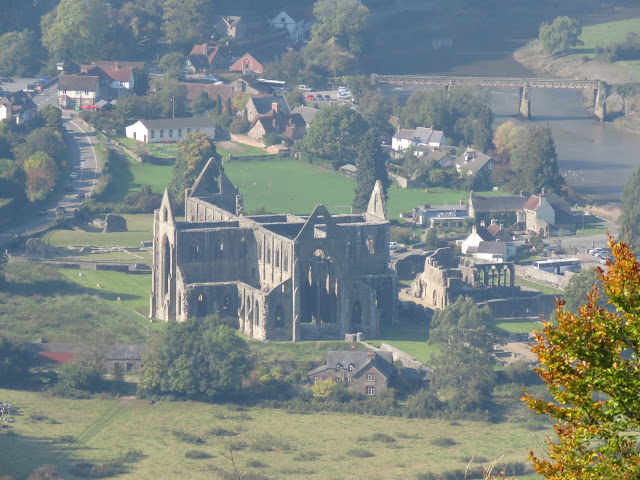We hadn't given much thought to the rather unusual name of the path, but, it turns out that 'Offa' was actually a person, an Anglo-Saxon king of Mercia from 757 to 796. The 'dyke' part of the name refers to an earthen bank and ditch that he ordered built. It was about 150 miles long, 20m wide and 2.5m high and was dug by hand and completed in the eighth century. Nobody really knows why it was built and from the portion we viewed it didn't seem like it would have been very effective to repel Welsh invaders, if that was the intent. The National Trail, 177 miles long, mostly follows the route of the dyke and the current English/Welsh border.
Along the way, views of the River Wye were spectacular...
...as was this view of the ruins of Tintern Abbey, from the Devil's Pulpit lookout.
The trail was varied: from shady forest paths...
...through to imposing country estates.
We were only out for a day's walk, so left the path at the village of Brockweir where we could catch a bus back to Chepstow. Unexpectedly coming across this 14th century monk's house was a great end to another great day out. Later, looking it up online for more historical information, imagine my surprise that you can rent this property as a holiday let! From the website, it looks like they've done a fabulous job on the interior. Have a look, The website states that it is a:
"...truly historic building, which once belonged to the monks of Tintern Abbey, and which is believed to be the oldest house in the Wye Valley, this beautiful property bears witness to the passage of many centuries. Originally a 12th-century monks’ hall with an ‘undercroft’ below for animals, and extended in the 14th-century, Monks Hall has recently been carefully renovated and furnished to provide a romantic, atmospheric place to stay."










Beautiful!
ReplyDelete